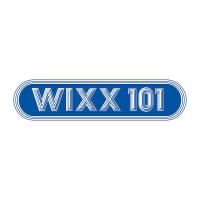
 For decades, programmers have wondered if there would ever be a hybrid Pop/Country format. It’s a hole that a few broadcasters have talked about over the years, sometimes when Country radio and music is at its hottest, but not always. In Canada, it was successful for several years in Calgary. Typically, though, stations eventually defaulted to pop or Country outright.
For decades, programmers have wondered if there would ever be a hybrid Pop/Country format. It’s a hole that a few broadcasters have talked about over the years, sometimes when Country radio and music is at its hottest, but not always. In Canada, it was successful for several years in Calgary. Typically, though, stations eventually defaulted to pop or Country outright.
The discussion arose again in the mid-’10s, prompted by the post-Florida Georgia Line explosion of younger listening at Country radio, then cooled when Country music did too. Cable TV provider MusicChoice has offered the Pop & Country format for several years.
Now, to some extent, the Country/Pop hybrid has already taken shape, especially at the medium- and smaller-market CHRs that were already friendly to both crossovers and a steadily growing number of Country/Pop collaborations. Records like Nelly & Florida Georgia Line’s “Lil Bit” or Morgan Wallen’s “Wasted on You” were powers for many of those stations before serious discussion of a Country crossover boom began for most PDs.
WIXX Green Bay, Wis., has a long history with both types of records. Last week, four of its five powers were Country: Post Malone & Wallen’s “I Had Some Help”; Shaboozey’s “A Bar Song (Tipsy)”; Dasha’s “Austin”; and Kane Brown & Marshmello’s “Miles on It.” All four are songs embraced by Country radio, but as is increasingly typical now, all were developed at both Country and CHR/Hot AC simultaneously. Two of the four are songs by new artists that radiated out to both formats after developing a streaming story.
If Country crossovers have been daunting to PDs who weren’t used to playing them, they have presented some challenges even at Country-friendly stations. Even in “Country lifegroup” markets, about 25-30% of the market typically does not like Country. PDs report getting calls from listeners who wanted to use the CHR to escape Country, even if that would logically be part of an “all-the-hits” radio station.
Despite that, Country-friendly CHRs are often in clusters with major Country stations. WIXX; Bristol Broadcasting’s clusters in Johnson City, Tenn.; Charleston, W. Va; and Paducah, Ky.; WKRZ Wilkes-Barre, Pa.; and WVAQ Morgantown, W. Va., are all among those stations where cluster strategy hasn’t led to stations being forcibly separated musically as they might be elsewhere.
WIXX PD Corey Carter says, “I feel like Wisconsin culture, at least in our area, is country music. I just think of all the little country dive bars in our area, and the songs that are played the most are the country-crossover songs. Our local research shows they are always our highest-testing songs.
“Our problem becomes when to finally drop [Country crossovers] off the playlist, because the test scores never die,” Carter says. “We do want to retain our identity as a mass-appeal station without leaning too much in one direction.”
In the course of most daytime hours on September 17, WIXX typically played three songs that were Country or CHR chart collaborations with Country artists, such as MGK & Jelly Roll’s “Lonely Road.” In a few hours, there was only one. In the 9 p.m. hour, it was as many as five. Country songs were typically 15-20 minutes apart, although it was possible to hear one next to, say, “Stick Season” by Noah Kahan, a pop hit by a Triple-A-based artist that still reads as Country sonically.
Despite that, the Country presence on WIXX never became overwhelming. Like many CHRs now, WIXX has a strong gold and throwback component, which contributed to its stylistic balance. Here’s WIXX just before 1 p.m., Sept. 18 with middayer Andy Gardner.
- Teddy Swims, “The Door”
- Miley Cyrus, “Flowers”
- Hozier, “Too Sweet”
- Lewis Capaldi, “Forget Me”
- Billie Eilish, “Birds of a Feather”
- Morgan Wallen f/Ernest, “Cowgirls”
- Lady Gaga, “Born This Way”
- John K, “Lost”
- Daughtry, “It’s Not Over”
- Kane Brown & Marshmello, “Miles on It”
- Mark Ambor, “Belong Together”
- Maneskin, “Beggin’”
- Miley Cyrus, “Used to Be Young”
- Benson Boone, “Beautiful Things”
- Post Malone, “Circles”
- Flo Rida f/Sia, “Wild Ones”
Seeing the Country/Pop hybrid come into being is a lot like looking at Top 40 in the early ’10s when the “turbo-pop” of the CHR rebound gave way to even more aggressive EDM crossovers. Advocates of dance music had been wondering if that format would finally find a radio foothold. Instead, Top 40 became mostly a dance format itself for several years. Arguably it becomes a format with any genre that dominates for a while.
The Country influence at CHR isn’t likely to fade as long as Jelly Roll is the collaborator of choice for artists in multiple genres. CHR and Country are the only two formats with any critical mass at the moment, particularly when it comes to influencing Billboard’s Hot 100 chart. (Until the CHR rebound, it was the Hip-Hop/R&B radio/Rhythmic Top 40/CHR wedge that resulted in the biggest multi-format hits. Now, only Kendrick Lamar’s “Not Like Us” fits that model.) If Country fades, it will likely remain a significant part of some of the stations that are closest to being hybrids now. Those stations will just be choosing from slightly fewer records.
